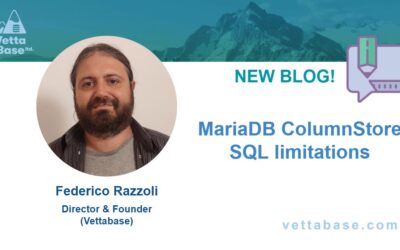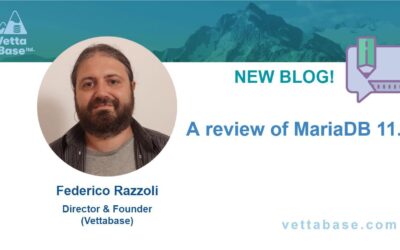MariaDB ColumnStore is an extremely fast and scalable solution for analytics built on MariaDB, which Vettabase supports. MariaDB ColumnStore inherits the MariaDB SQL dialect, and many MariaDB features. However, numerous MariaDB features are not available for the...
Federico Razzoli
Installing MariaDB ColumnStore on Ubuntu, for production
Let's see how to install MariaDB ColumnStore (single node) on Ubuntu. Let's also prepare the system to run ColumnStore with good performance, as we should always do in production. The following steps should work on any modern Ubuntu version up to and including 24.04...
3 ways to select rows from a query result in SQL
In SQL, everything is a table. Even the results of a query are a table. This means that you can select rows and columns from the results of another query. Sometimes this allows us to do things that would otherwise be impossible. For example, joining the results of an...
Why managers should learn and use SQL
SQL is the language of data. You write a query, a single sentence in a language that resembles English, and you obtain the data you need. It's supported by the majority of databases, and the language is pretty standard. If you have a query that works on Oracle, most...
Primary keys in Data Warehouses
In my recent webinar Designing a schema for a data warehouse, I was asked a question that deserves a long answer. I recommended to use IDs generated directly in the data warehouse. In other words, even if you import customer data from a MySQL database and each...
MariaDB 11.4 LTS review: cost-based optimiser, autoconfigured SSL and more
MariaDB released a new Long Term Support version as Generally Available: 11.4. So I feel it's time to resume my ongoing project of reviewing MariaDB new versions. I didn't review recent MariaDB versions, but this doesn't mean I wanted to cease my reviews. My...
New project: Awesome MariaDB list
At Vettabase, we're delighted to announce our new project, sponsored by MariaDB Foundation: the Awesome MariaDB list on GitHub! We already interact with the MariaDB Foundation as Technology Partners, and this project is the newest outcome of our long-time friendship....
Data warehouse benefits and use cases
Recently I talked to many companies about this topic: why a data warehouse is essential to support company decisions, in all departments. I decided to summarise my points in this article, for future reference. The need for centralised information All company...
How to query a REST API with MariaDB CONNECT engine
Querying a remote REST API directly from the database: does it sound like pure madness? Some people will surely answer that yes, it does. So, first of all, let me spend a paragraph to show some great benefits of doing so. Then I'll show you how to query a REST API...
The benefits of MariaDB ColumnStore
Last week Richard announced our projects on MariaDB ColumnStore. Take a look at his great post, if you didn't already. Since then, I've got some questions from customers, colleagues and friends: why did you guys decide to robustly invest into ColumnStore, and offer...










